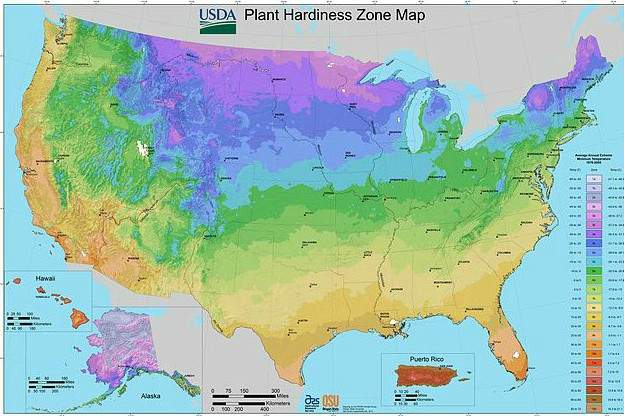
The best known map of hardiness zones reflects only the average annual (cold) minimum temperatures over the last 30 years. But plants are affected by both cold and hot extreme temperatures.
Just as some plants are more cold tolerant than others, others have differing degrees of tolerance to heat. Because of this, the American Horticultural Society has developed a Plant Heat Zone Map as well, so that gardeners can select the plants that will be best suited to their gardens overall.
The 13 hardiness zones are based on the average number of days where the temperature exceeds 86 F, which is the temperature where many plants sustain short- or long-term damage from heat stress.
Remember, however, that the hardiness zones marked on the tags of plants that we buy, only reflect the average minimum winter temperatures for each area of the hardiness map. It is usually wise when planting permanent residents of our gardens that we choose plants that are one zone hardier than our region, just in case.
Each of the 13 zones in the U.S. represents a 10 F degree band of minimum winter temperatures. These bands are further subdivided into 5 F degree segments, which is indicated by an (a) or (b) after the zone number.
Although we have all sometimes ignored the hardiness maps, they really do provide information that is crucial to the success of our plants.









